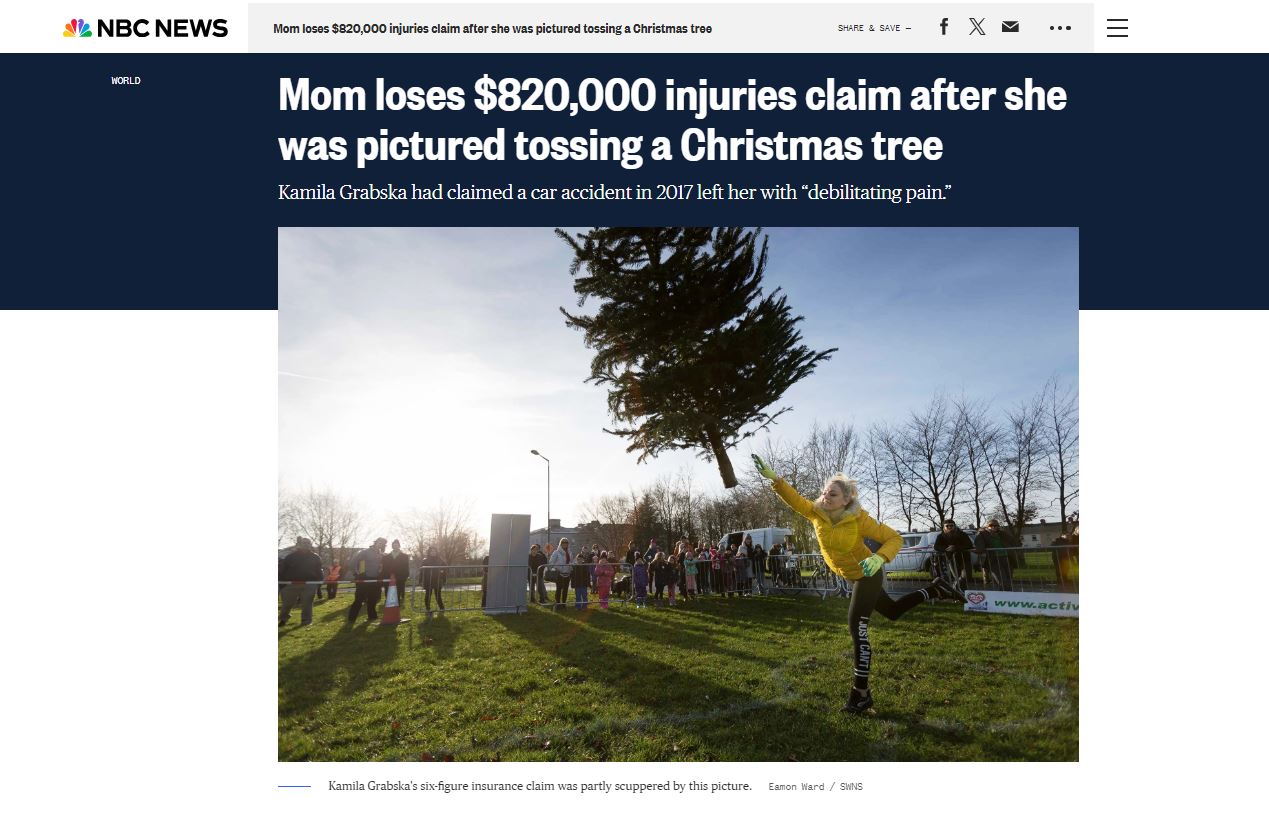Viral Tree-Throwing Story Offers Lessons to Plaintiffs Everywhere

A court in Ireland has made international news this week. A mother’s $820,000 lawsuit has been dismissed after a picture emerged of her winning a contest to see who could toss a tree the farthest.
As we recently wrote about in a post on our website, “Social Media’s Role in Lawsuits”:
All personal injury cases involve the plaintiff’s credibility. If a plaintiff has told medical providers or testified that they cannot do certain activities, but are then depicted on their social media accounts doing those exact activities, it can seriously harm the plaintiff’s case. It can be devastating to the plaintiff’s credibility. It is equally important to keep in mind that social media can also provide evidence of a person’s emotional state. This can raise issues for claims for emotional or psychological injuries.
The presiding judge in Ireland ruled in favor of the defendant, dismissing the lawsuit filed by the plaintiff who sought damages for injuries sustained in a car accident. The defense presented photographic evidence to the court, depicting the plaintiff throwing a Christmas tree, approximately one year after the injuries occurred. This evidence led the court to conclude that the plaintiff had embellished her injuries with the intent of supporting her case. This case serves as an important reminder that attendance at public events can result in the dissemination of photographic evidence on online platforms, which can have a negative impact on the outcome of a case.
This story offers valuable lessons that plaintiffs should consider when it comes to social media, online presence and injury claims. First, the adage, “a picture is worth a thousand words”, conveys the power that images can have on an audience. Photographic evidence can go to the perceived credibility of the plaintiff and it is clear that photographic evidence can carry substantial weight with a trier of fact. Secondly, plaintiffs need to be exceptionally mindful of their online presence and carefully consider what public activities they participate in. Ultimately, plaintiffs need to exercise caution with social media, recognize the potential impact of visual evidence, and consider the implications of their public activities. These considerations can significantly influence the outcome of trials for damages, as shown in this recent headline from Ireland.
About the Authors

Thomas is an Associate at Oatley Vigmond. His practise is entirely devoted to representing clients who have suffered a serious personal injury and is committed to helping clients achieve the compensation they deserve. Thomas previously worked for a prominent Toronto Insurance Defence firm where he defended insurance companies in motor vehicle accidents as well as other insurance related lawsuits.
